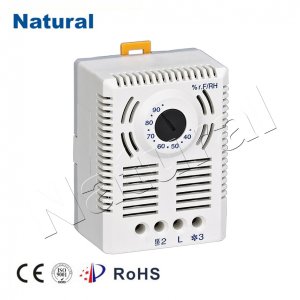Fan thermostats, often overlooked but essential components of HVAC systems, play a critical role in maintaining indoor comfort and energy efficiency. In this article, we will delve into the world of fan thermostats, exploring their functionality, types, benefits, and importance in the realm of heating, ventilation, and air conditioning.

Introduction Fan thermostats are devices designed to control the operation of fans in HVAC systems. Their primary function is to regulate the distribution of conditioned air throughout a building, ensuring optimal temperature and humidity levels. By understanding the different aspects of fan thermostats, we can appreciate their significance in maintaining indoor comfort and conserving energy. How Fan Thermostats Work Fan thermostats rely on temperature sensing to determine when a fan should be activated or deactivated. When the thermostat detects that the indoor temperature has deviated from the desired setpoint, it triggers the fan to start or stop. This simple yet effective mechanism ensures that the HVAC system only operates when necessary, preventing energy wastage. Types of Fan Thermostats Bimetallic Thermostats: These traditional thermostats use a bimetallic strip that expands or contracts based on temperature changes. When the strip bends, it activates the fan, and when it returns to its original state, the fan turns off. Electronic Thermostats: Modern electronic fan thermostats use sensors and microprocessors to provide precise temperature control. They offer greater accuracy and programmability compared to bimetallic thermostats. Digital Thermostats: These advanced thermostats have digital displays and can be programmed to operate at specific times and temperatures. Some models even offer remote control via smartphone apps. Smart Thermostats: The latest innovation in fan thermostat technology, smart thermostats, connect to the internet and allow homeowners to control their HVAC systems remotely. They also learn from user behavior and adjust settings for maximum energy efficiency. Benefits of Fan Thermostats Energy Savings: Fan thermostats prevent the HVAC system from running continuously, reducing energy consumption and lowering utility bills. Enhanced Comfort: By maintaining consistent indoor temperatures, fan thermostats contribute to a more comfortable living or working environment. Extended HVAC System Lifespan: Reduced runtime leads to less wear and tear on HVAC components, potentially prolonging their lifespan. Environmental Benefits: Using energy more efficiently reduces carbon emissions, contributing to a greener planet. Importance in HVAC Systems Fan thermostats are integral components of HVAC systems, working in tandem with heating and cooling equipment to maintain comfort and efficiency. They ensure that conditioned air is distributed evenly throughout a space, preventing temperature variations and hot or cold spots. Moreover, fan thermostats contribute to the overall performance of HVAC systems. Properly functioning fan thermostats help prevent issues such as short cycling, where the system turns on and off frequently, reducing energy efficiency and increasing wear on equipment. Conclusion Fan thermostats may be small in size, but their impact on HVAC systems and indoor comfort is substantial. Whether you have a traditional bimetallic thermostat or a cutting-edge smart thermostat, understanding how these devices work and their benefits is crucial for maintaining a comfortable and energy-efficient living or working environment. As technology continues to advance, fan thermostats will likely play an even more significant role in shaping the future of HVAC systems.